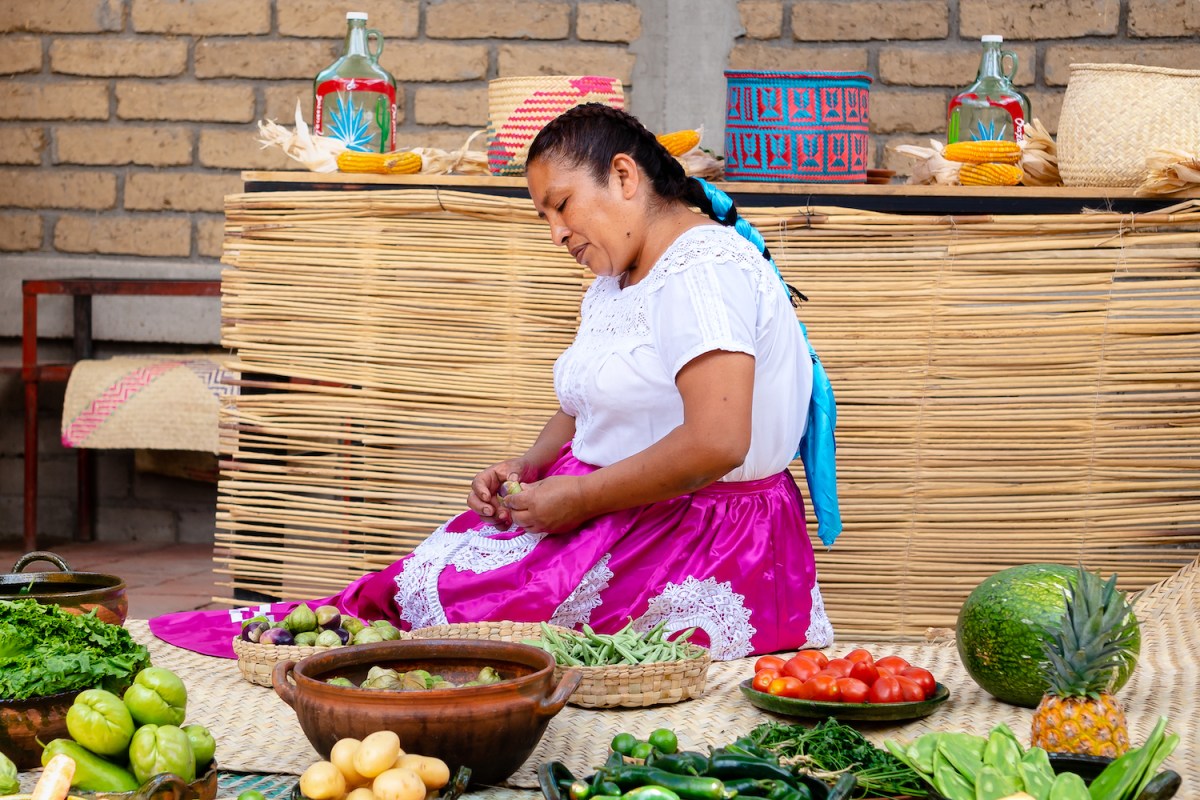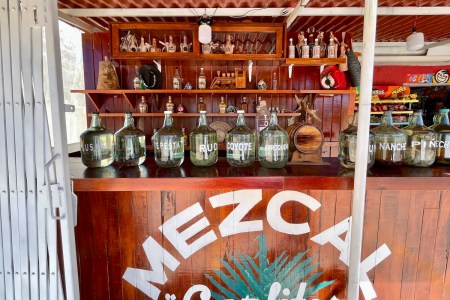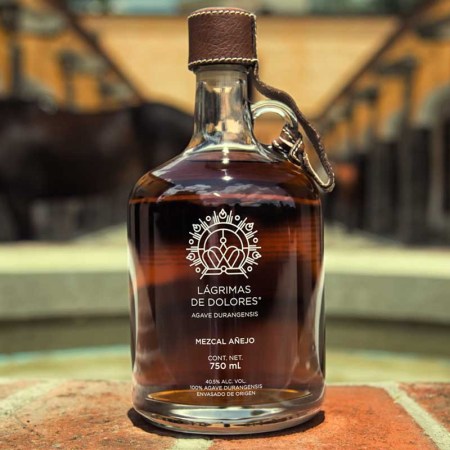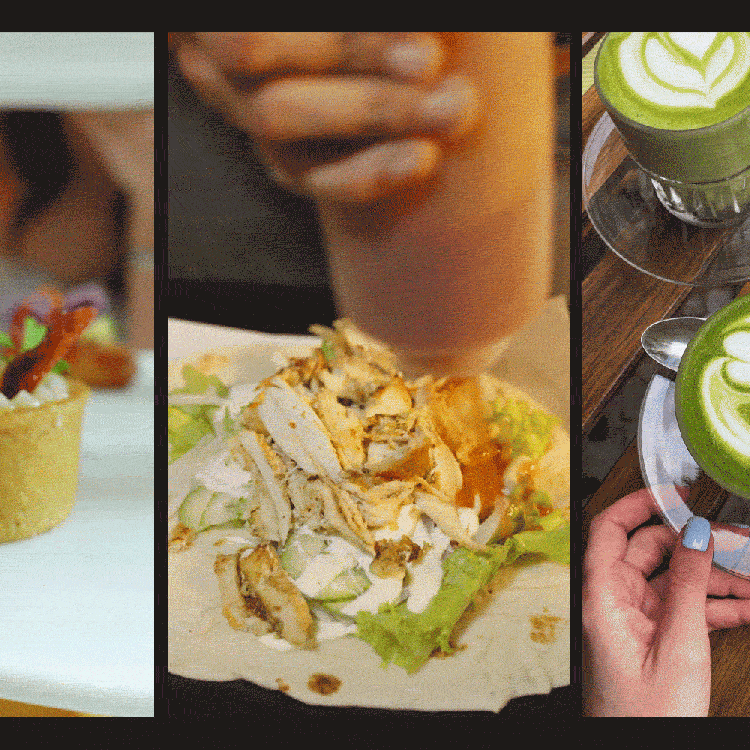On Thanksgiving day 2021, my fiancée Heather and I skipped the typical family gathering for a trip to Oaxaca and booked a cooking class through Airbnb experiences. It had a simple name, “Traditional Oaxaca cooking class,” and incredible reviews. Leaving from Oaxaca de Juárez, we boarded a van to the nearby village of Matadamas, headed toward the home of Mimi Lopez Hernandez.
It’s hard to be a stranger around Mimi. Little bowls, cacao and some water were placed in front of us as we settled around the table in her side yard. Her son, Charlie, translated her instructions to make our own welcome drink as she told the story of how she started inviting people from around the world into her house. Then, as we used a mortar and pestle to create a simple salsa, our group of about 10 tried their best to tell a little bit about ourselves, too. And she listened. Not in an awkward, icebreaker way, but in an excited, actually might remember you type of way.
No matter where we came from and what we knew coming in, she promised we would leave with a better understanding of Oaxacan culture and cuisine.
Anyone looking for the secret to Oaxaca’s famous food will quickly realize it’s not a secret at all. It’s the keepers of the recipes who pass down the ways to use quality ingredients through time-tested techniques. Heritage maize makes its way into an uncountable number of dishes, as do heirloom tomatoes, smokey pasilla Oaxaqueña (a smoke-preserved chile that grows only in Oaxaca’s valley) and chilhuacle (a red chile with chocolatey notes). Here, there are more than 20 types of beans, both cultivated and wild. Quesillo, Oaxaca’s unpasteurized fresh and stringy cheese that’s pulled by hand, is often made by small, local producers.
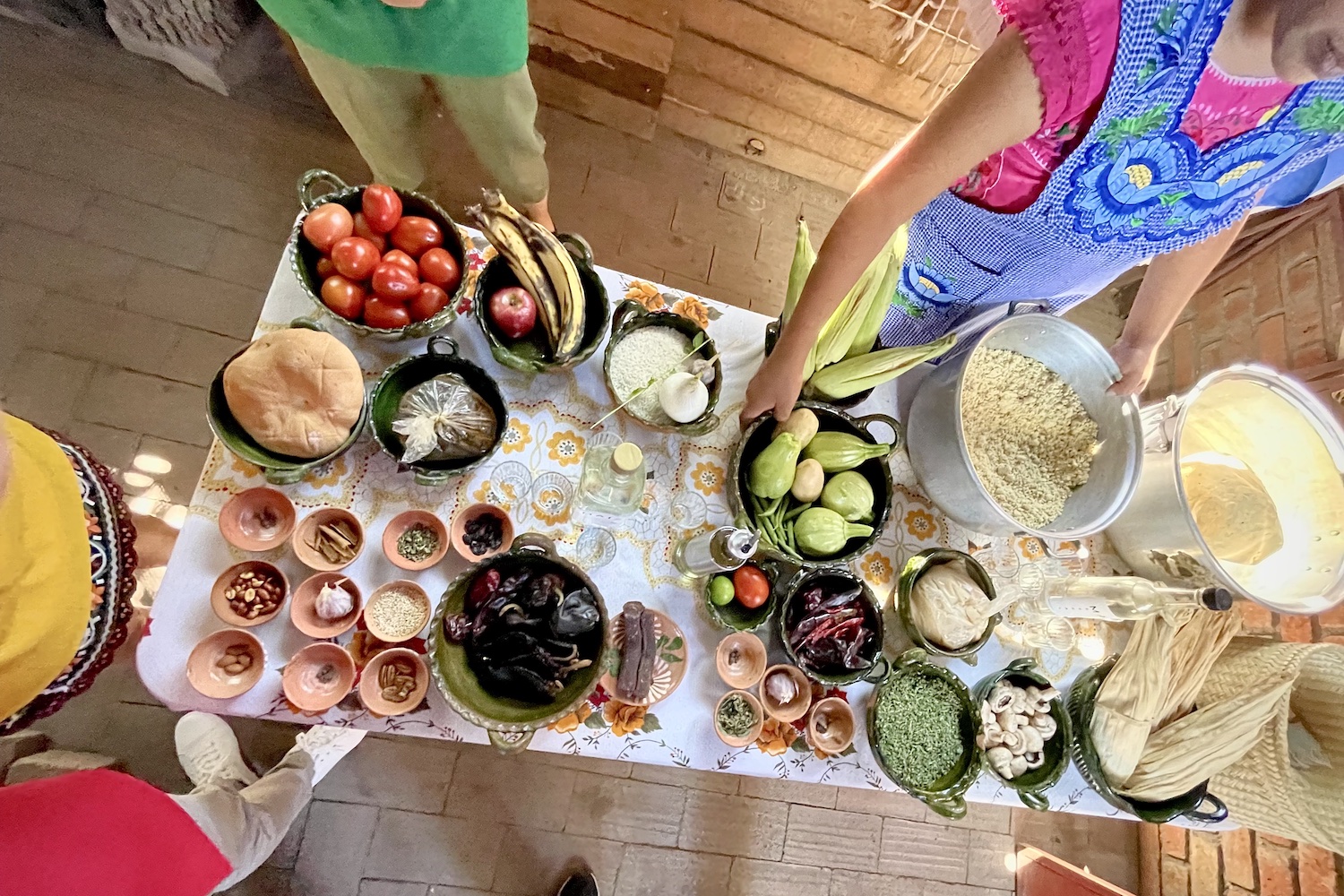
Herbs and spices like pitiona (similar to verbena), dried avocado leaves and hoja santa (which tastes like a peppery anise) spice the region’s dishes. Bugs play an important role in Oaxacan cuisine as well, from the chapulines (grasshoppers) and chicatanas (winged ants) sold by street vendors to sal de gusano, salt mixed with the dried and crushed worms living on agave plants that’s commonly served alongside mezcal. While it would be easy (and delicious) to let these ingredients speak for themselves in simple recipes, traditional Oaxacan cooking techniques bring out the best in everything.
“When we launched the class, I remember showing some unique ingredients or techniques, and in my mind I was like, ‘this doesn’t need that much explanation because it’s something common,’” Mimi says. “And yeah, it’s common for me, but not for all the people who came from around the world. So now I try to explain in detail all the characteristics of the ingredients, recipes and tools, and also I like to share the meaning behind our food, behind our culture, behind Oaxaca.”
Travelers heading to Oaxaca can base a trip around eating delicious food and end up learning about the region as a whole. “Over the years, I’ve noticed that the type of travelers who visit Oaxaca has indeed changed,” says Lorena Rubio, who was born and raised in Oaxaca de Juarez. Today, Rubio is the owner of Oaxaca Eats Food Tours, which takes people to restaurants and markets in the city to experience the food and, of course, the mezcal. “The visitors who come to our city are people who seek to immerse themselves in a totally authentic experience within Mexican culture.”
Two of the biggest areas of tourism growth Rubio has noticed are people coming for mezcal and people coming for food. “I have been able to come to the conclusion that the visitors who choose Oaxaca are more prepared people when traveling, who have investigated at least a little about our culture, and that the gastronomy is an important interest in their day-to-day life — whether they’re a chef, a restaurant owner or a foodie,” she says. “Undoubtedly, people who fall in love with Oaxaca continue to talk about it for a long time. Hearing from travelers that Oaxaca was a word of mouth recommendation is very common.”
Still, there’s room for continued growth and appreciation, especially for travelers who only know Mexican food as a monolith.
Turning a Passion Into an Oaxacan Cooking Experience
Growing up, Mimi had three brothers, “and therefore my mother commissioned me to prepare the food,” she says. “My parents were dedicated to sewing aprons and gowns, and they worked all day. Therefore, my mother Susana only told me what I had to do, and I prepared it. She gave me the ingredients and the procedure to do it but nothing else, and she watched me and made sure I did it well.”
At first, these were simple dishes, but that changed when Mimi married at 16 and moved into her mother-in-law’s house. Here, “everything had more sense because she loves the traditional cuisine,” she says. Her husband made cheese, and she learned to make fresh Oaxacan cheese as well, while her mother-in-law passed on traditional cooking techniques. “I have never had a formal education as a chef, but I have always been learning from what surrounds me, from my Oaxaca,” she adds.
In 2019, Mimi participated in the annual Meeting of Traditional Cooks of Oaxaca. People from all over the state come together in Oaxaca de Juárez for the event to showcase dishes from their towns and compete for awards in various cooking categories. The diversity of Oaxacan culture and cuisine is staggering. There are more than 550 municipalities with thousands of villages and people from 18 recognized Indigenous groups. Each region has its own culinary specialties and styles, usually guided by the wide-ranging terrain in a state that has mountains, beach, high-desert and fertile valleys. Sixty-eight cooks competed in the event Mimi entered. She focused on pipian, a traditional red or orange sauce made with pumpkin seeds, with cactus. It won second place.
“After that moment, everything changed in my life,” Mimi says. With support, she opened a restaurant, Maíz Cocina Tradicional. During the pandemic, she created a YouTube channel and has since given talks to university students at conferences. Eating her food and learning techniques through speaking with Mimi is one thing, but actually partaking in the cooking is another entirely. So Mimi launched her traditional cooking experience.
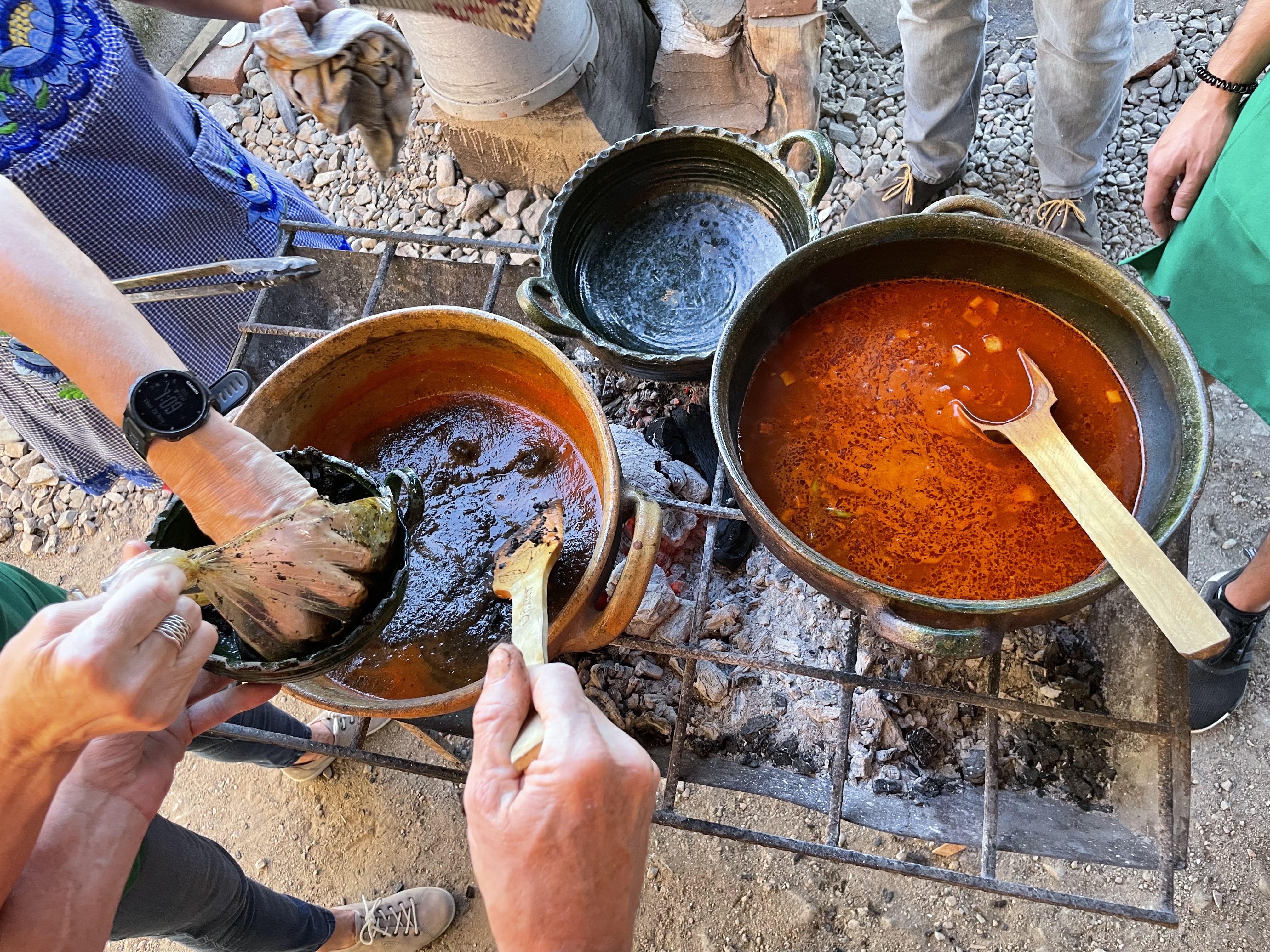
On my visit, maize, plantains, tomatoes, garlic, spices, chiles and nuts sat ready to be used. Mimi immediately assigned me the job of chopping chayotes in my bright red apron, simply because I was able to name the green squash when she asked if anyone was familiar. Behind me, a goat bleated and a wall of now-dry marigolds hung from the height of Día de los Muertos. Meanwhile, Mimi walked around to each person, assigning various tasks like mixing fat into ground corn, filling tamales and slowing roasting ingredients in a big pot over coals. It wasn’t long before a bottle of mezcal was passed around alongside small glasses etched with crosses on the bottom.
A few drinks in, Mimi showed us how to properly use a molcajete to grind chiles and dried herbs into a paste for mole, which is hard work even when you know what you’re doing. Us visitors, it should be noted, did not, but we left with a better sense of the effort it takes. Later, we used the ground maize to form balls pressed into tortillas, then tossed them (with hit-or-miss success) onto the comal sitting over an open flame.
Like any good Thanksgiving meal, it took hours and multiple sets of hands to make. Unlike many Thanksgiving meals, enjoying this one didn’t involve navigating family dynamics and skipped right to the food and new friends.
Finding Mezcal Along One of Mexico’s Most Notorious Roads
How one writer discovered some of Oaxaca’s best mezcal producers on a stretch of steep, winding highwayFood as a Lesson in Culture and Relationships
Mimi says she’s always been an extrovert, and it shows. Even those in my group who spoke little-to-no Spanish gravitated to her whenever she was speaking. Her stories came fast, with brief translation interjections from Charlie when he could convince her to pause for a bit. A lot of what Mimi likes to talk about is Oaxacan food, of course, but also life and relationships in general.
At the time, Heather and I had been engaged going on two years, and had been together for another 10 before that. The question of marriage popped up. Even with our minimal Spanish, we understood Mimi’s playful teasing about how we should just make it happen already and that she would be watching for our marriage on Instagram. She’s followed up on that promise, keeping in regular contact by messaging me about the small things (reactions to my travels) and the big things (the birth of my daughter). And we’re not the only ones. Mimi tells me that when she talks about marriage with couples in her class who aren’t engaged yet, she’ll see shortly after that people do indeed follow through and send her photos of a ring.
“That’s everything to me, it means a lot,” Mimi says. “One of the couples got engaged here in Oaxaca one year ago, and they returned this year to get married and came to my house to say hi.”
The restaurant demands most of Mimi’s attention on the weekends, so she hosts the cooking experience three times a week (usually Monday, Tuesday and Thursday). The menu is planned a week ahead to account for any dietary restrictions, the season, what local products are available and any upcoming holidays.
Airbnb offers a great way for people to see what her experience is all about through reviews and photos, but Mimi offers reservations on Instagram, too. She estimates that more than 2,000 people have come to her house to cook with her, from chefs to teachers to photographers to families who just love to eat. “Everyone is welcome to my home,” Mimi says. “I always try to learn their names so at some point I can easily remember them.”
I’ve tried my hand at the techniques and recipes Mimi taught us that day numerous times. I’ve also followed along as her business has continued to grow in popularity. And when my wedding day comes later this year, I know to expect a congratulatory note that Heather and I finally made it happen already.
Every Thursday, our resident experts see to it that you’re up to date on the latest from the world of drinks. Trend reports, bottle reviews, cocktail recipes and more. Sign up for THE SPILL now.
